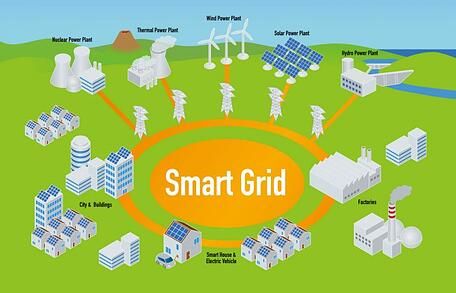In today’s technology-driven world, the Internet of Things (IoT) has revolutionized the way we live and work. One of the key areas where IoT is making a significant impact is in energy efficiency, particularly through smart grid solutions. By leveraging IoT technology, utilities and consumers alike can make informed decisions to optimize energy usage, reduce waste, and lower costs.
The Role of IoT in Energy Efficiency
IoT devices such as smart meters, sensors, and connected appliances are enabling utilities to collect real-time data on energy consumption. This data is then analyzed to identify patterns and trends, allowing for more accurate forecasting and better resource management. Smart grid solutions also enable utilities to remotely monitor and control energy distribution, resulting in improved reliability and reduced downtime.
Benefits for Utilities
For utilities, the implementation of IoT technology offers several key benefits. By having access to detailed data on energy usage, they can better understand peak demand periods and adjust their supply accordingly. This leads to more efficient energy distribution, reduced transmission losses, and lower operational costs. Additionally, IoT-enabled smart grids help utilities identify and address potential issues before they escalate, ensuring a more reliable and resilient energy infrastructure.
Benefits for Consumers
On the consumer side, IoT technology provides numerous opportunities to increase energy efficiency and reduce costs. Smart thermostats, lighting systems, and appliances allow homeowners to adjust settings remotely or based on predetermined schedules. This level of control not only enhances comfort and convenience but also helps lower electricity bills by optimizing energy usage. Furthermore, IoT devices can provide real-time feedback on energy consumption, empowering consumers to make more informed decisions about their usage habits.
Challenges and Considerations
While the benefits of IoT-enabled smart grid solutions are clear, there are still challenges to overcome. Security and privacy concerns remain a top priority, as the proliferation of connected devices increases the potential attack surface for cyber threats. Additionally, interoperability issues between different IoT platforms and devices can hinder seamless integration and data exchange. It is crucial for stakeholders to collaborate and establish industry standards to address these challenges and ensure the successful implementation of IoT technology in the energy sector.
Future Outlook
As IoT technology continues to evolve and mature, the potential for energy efficiency through smart grid solutions will only grow. By leveraging the vast amounts of data generated by connected devices, utilities and consumers can unlock new opportunities for reducing waste, improving sustainability, and promoting a more environmentally friendly energy ecosystem. With ongoing advancements in artificial intelligence, machine learning, and data analytics, the future of energy efficiency through IoT looks promising and bright.
Conclusion
The integration of IoT technology in smart grid solutions is transforming the energy sector in profound ways. By harnessing the power of data and connectivity, utilities and consumers can work together to achieve greater energy efficiency, sustainability, and cost savings. As we move towards a more interconnected and digitized world, the role of IoT in driving energy efficiency will continue to play a vital role in shaping the future of energy consumption and management.
Ultimately, the success of IoT-enabled smart grid solutions will rely on collaboration, innovation, and a shared commitment to sustainability. By working together, we can harness the full potential of IoT technology to create a more efficient, resilient, and sustainable energy infrastructure for generations to come.
